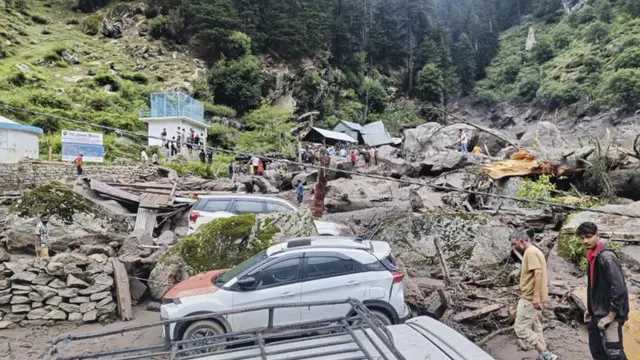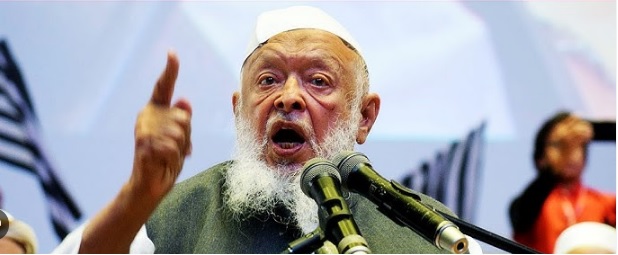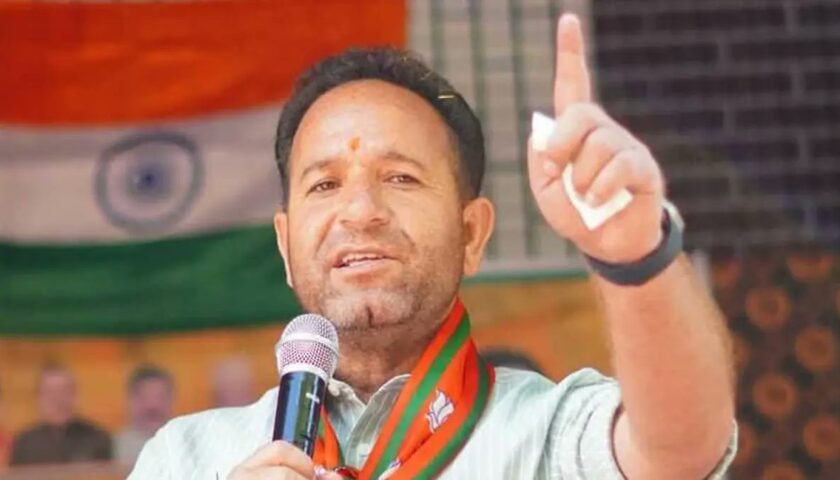A Himalayan Tragedy That Refuses to Fade Away
By: Javid Amin | 14 October 2025
The narrow valley of Chosoti in Kishtwar, Jammu & Kashmir, once echoed with the devotional chants of yatris making their way to Machail Mata Temple. Today, it echoes with silence.
On August 24, 2025, a sudden cloudburst triggered catastrophic flash floods and landslides, washing away homes, pilgrimage shelters, bridges, and hundreds of lives in a matter of minutes. At least 66 people were confirmed dead, but 32 remain missing, swallowed by the unforgiving terrain of the Himalayas.
Two months on, the cold winds of October carry not just the chill of winter—but the unrelenting grief of families waiting for closure.
“We don’t want compensation—we want our father’s body,”
— Shabir Ahmed, son of a missing yatri from Doda.
Timeline of the Disaster: How August 24 Became a Day of Mourning
Date: August 24, 2025
Location: Chosoti Village, Machail Mata Yatra route
Casualties: 66 confirmed dead, 32 missing
Impact: Homes, bridges, and yatra shelters washed away; communications down for 48 hours
The cloudburst occurred around 5:20 AM, just as pilgrims began moving from the base camp. Within 15 minutes, a surge of water and debris ripped through the valley. Witnesses say the roar was “like the mountain itself had split open.”
Tents, resting sheds, and makeshift kitchens for yatris were swept downstream. Roads collapsed, landslides blocked rescue vehicles, and communication lines snapped, plunging the area into complete isolation for two days.
Search Operations: Heroic Beginnings, Painful Silence
In the immediate aftermath, National Disaster Response Force (NDRF), State Disaster Response Force (SDRF), the Army, J&K Police, and hundreds of local volunteers launched a massive search and rescue mission.
They worked in shifts, digging through boulders, silt, and collapsed structures. Drone surveillance teams were also deployed to scan inaccessible areas. Rescue dogs were airlifted from Srinagar.
But the Himalayan terrain had other plans.
-
Frequent landslides made helicopter sorties dangerous.
-
Continuous rainfall for a week kept ground unstable.
-
Mudslides buried entire sections of the yatra path.
-
Flashfloods reshaped the riverbed, displacing bodies and debris downstream.
“We recovered many, but not all. Some areas are practically unreachable without triggering another landslide,”
— An NDRF official involved in the operation.
By mid-September, active recovery operations were quietly scaled down. The official explanation: “weather, terrain, and logistical constraints.”
But for families—this was abandonment.
Families in Limbo: Mourning Without Graves
In Kishtwar’s makeshift relief camps and scattered homes, the grief is palpable.
Parents hold on to photographs, wives keep prayer candles burning, children ask questions that have no answers. Without a body, there is no closure.
“How can we mourn without a grave?” says Shabir Ahmed. “Every knock on the door, every phone call—we still hope it’s him.”
For 32 families, there are no funerals. No last rites. No closure.
Many have set up temporary shrines at the banks of the river where their loved ones were last seen. Some visit the disaster site every week, staring at the rocks and water, hoping for a miracle.
Demands from Ground Zero: A Cry for Action
Over the past two months, survivors and relatives have staged sit-ins outside the DC Office in Kishtwar, demanding:
-
🔸 Renewed search operations before winter snowfall makes the area inaccessible.
-
🔸 DNA testing of unidentified remains to help identify victims.
-
🔸 Transparent communication from the administration.
-
🔸 Judicial inquiry into the disaster preparedness and response failures.
-
🔸 Permanent disaster management infrastructure in pilgrimage zones.
Civil society groups, local panchayats, and social activists have backed the demands. Many point out that Chosoti, a known high-risk zone, lacked proper early warning systems and emergency shelters—despite being on a pilgrimage route hosting thousands of yatris annually.
Political Silence and Public Fatigue: When Headlines Fade
In the first week after the tragedy, political leaders made condolence visits, relief announcements, and promises of justice.
But as the weeks passed, the media spotlight dimmed, statements dried up, and the families’ fight grew lonelier.
“This is not just a natural disaster—it’s a failure of empathy,”
— Zareefa Bano, social worker from Kishtwar.
The emotional toll on families has deepened, especially in vulnerable communities where many victims were sole breadwinners. Social workers warn of long-term mental health consequences if the state does not provide sustained psychological and financial support.




